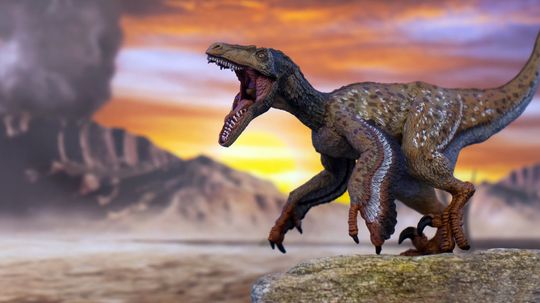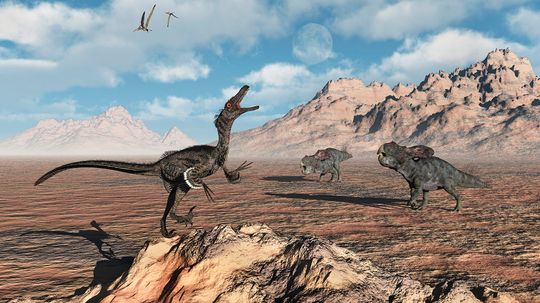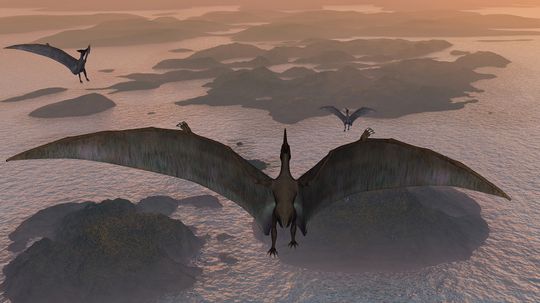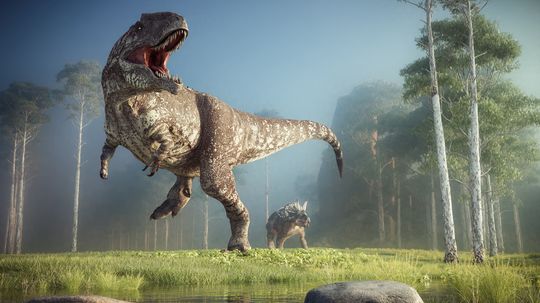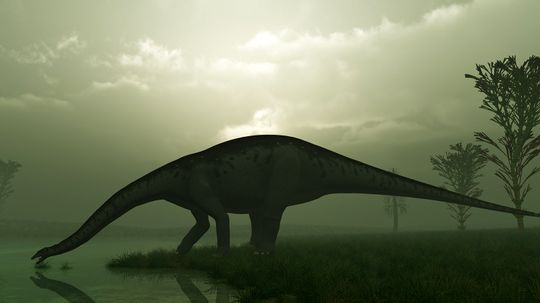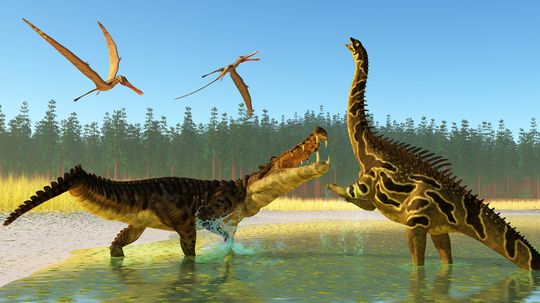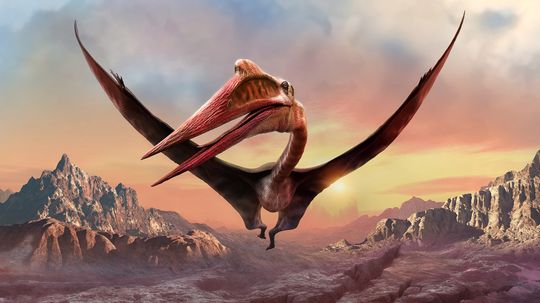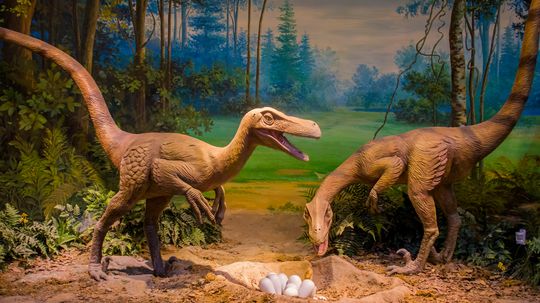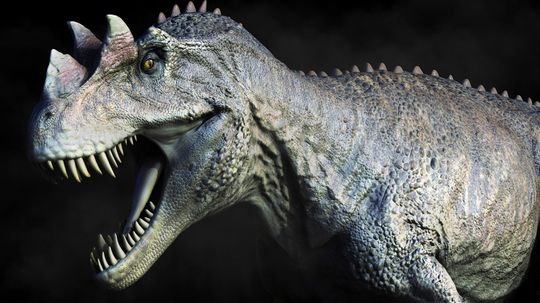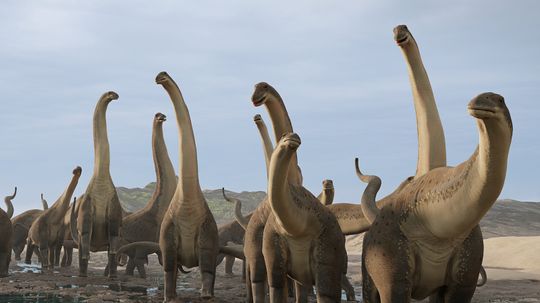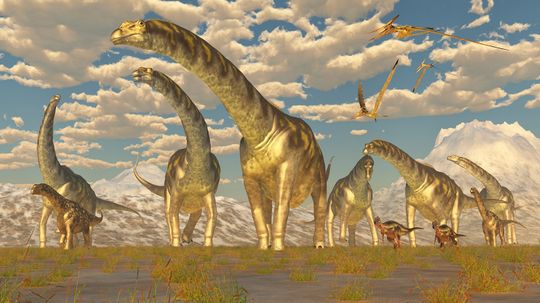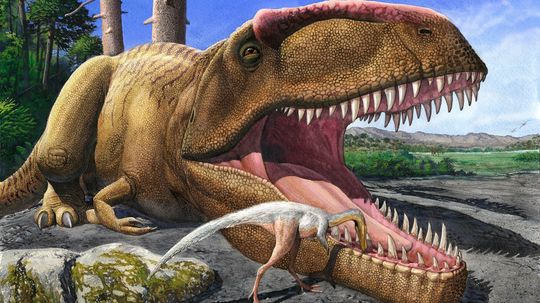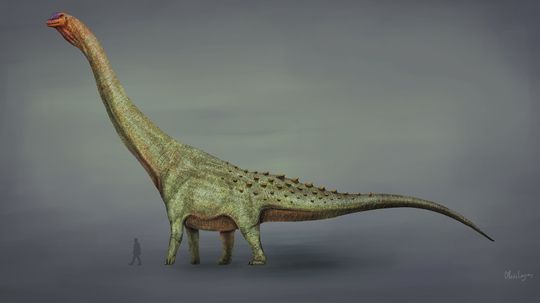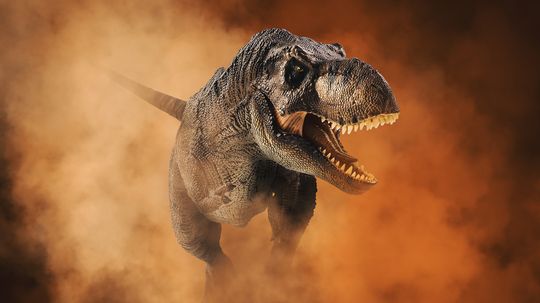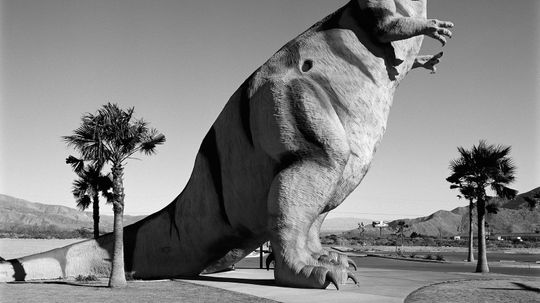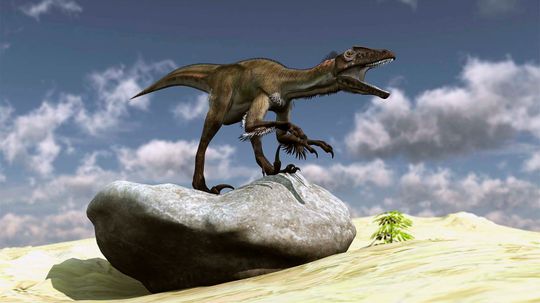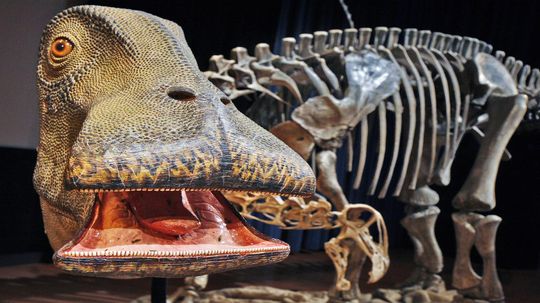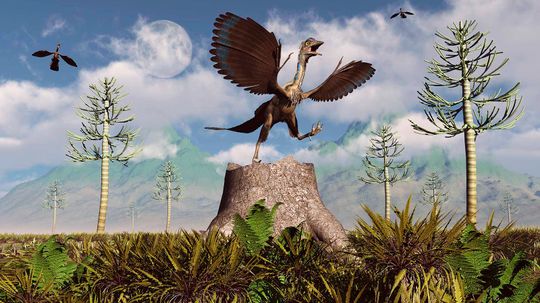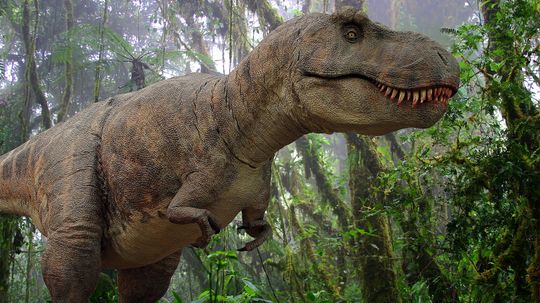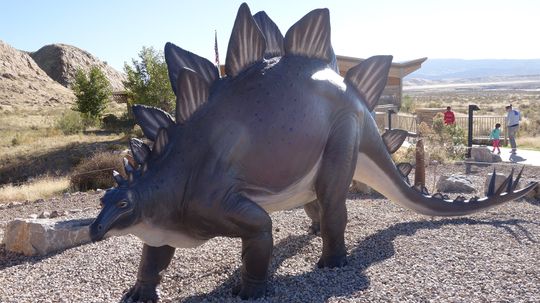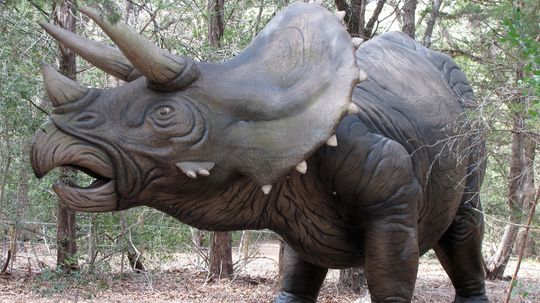Dinosaurs
It isn't hard to imagine the world full of dinosaurs, even though these extinct animals haven't walked the earth for millions of years. Learn all about dinosaurs, including early dinosaur discoveries, dinosaur fossils, and dinosaur extinction.

12 Scariest Dinosaurs You'd Want to Avoid While Time Traveling
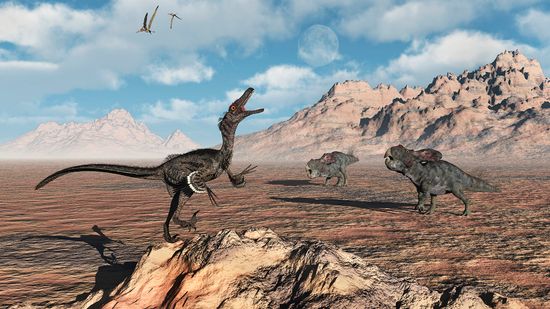
The Smartest Dinosaur (and 9 More Clever Prehistoric Reptiles)
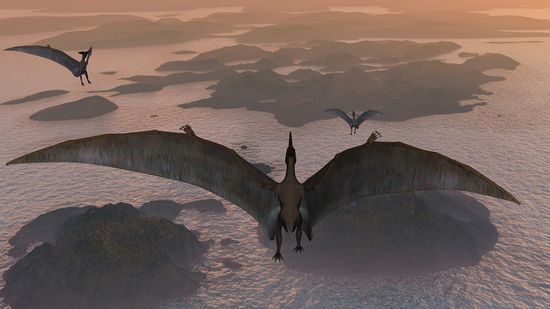
Pteranodon vs. Pterodactyl: Comparing Non-dinosaur Species
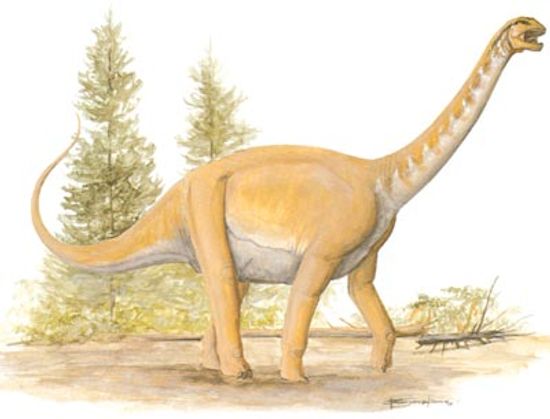
Barapasaurus
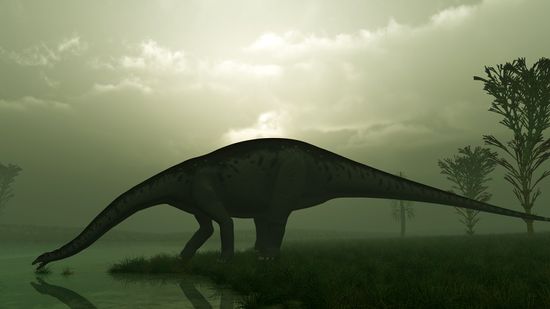
Brontosaurus vs. Brachiosaurus: Comparing Long Necks
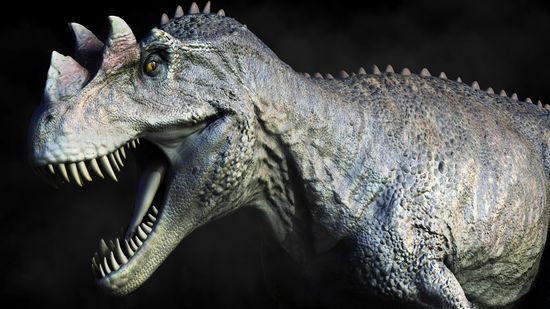
Ceratosaurus: The Horned Lizard of the Jurassic Period
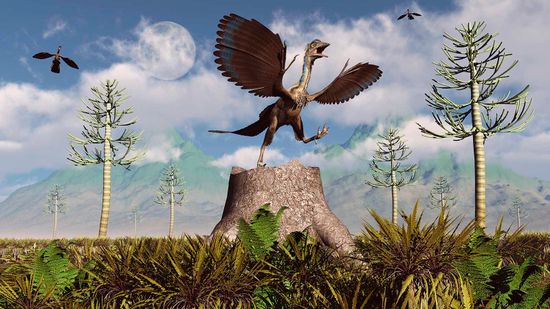
Meet Archaeopteryx, a Feathered Dino With Wings and Teeth
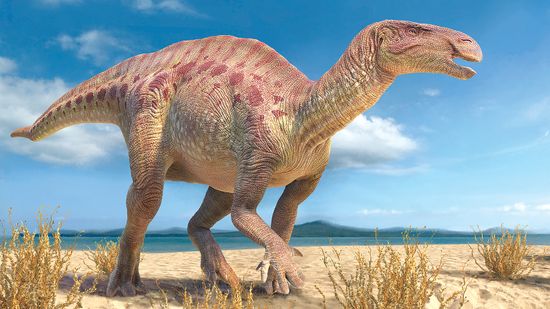
Iguanodon Skeletons Are the Most Complete of Any Dinosaur
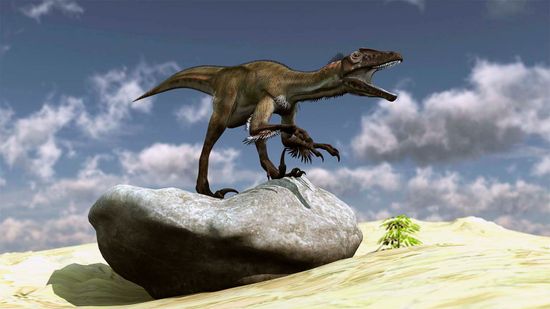
Utahraptor: The Salty Saga of a Killer Dinosaur
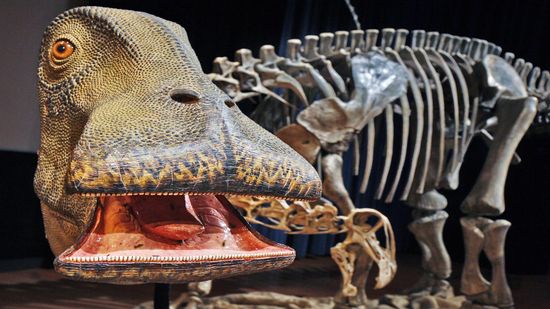
Nigersaurus: The 'Mesozoic Cow' With More Than 500 Teeth
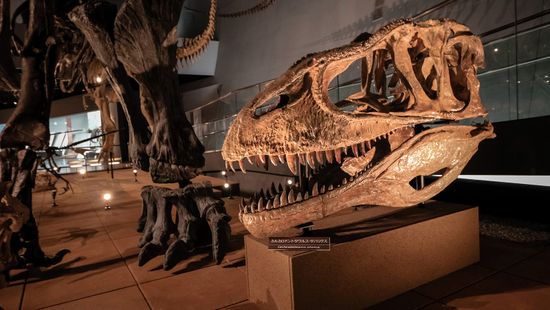
Carcharodontosaurus Rivaled T. rex as a Shark-toothed Hunter
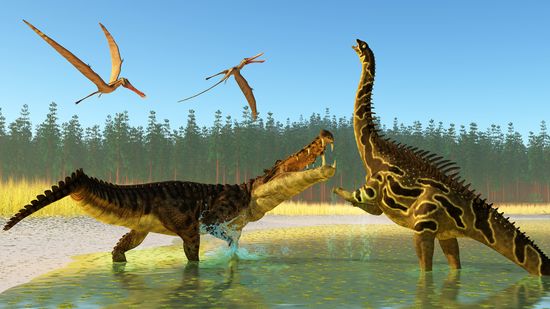
Kaprosuchus Was a Giant, Dinosaur-eating 'Boar Croc'
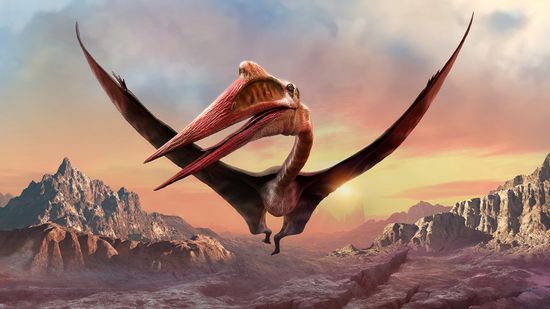
Quetzalcoatlus: The Largest Flying Creature in Earth's History
Learn More
Some of the scariest dinosaurs ever to walk the Earth were terrifying for reasons beyond their size. They were dangerous animals with tools perfectly evolved for hunting, ambushing, or defending against other dinosaurs.
By Nico Avelle
Which were the smartest dinosaurs? While we can't sit a Velociraptor down for an IQ test, scientists use fossil evidence like brain cavity size and body ratios to make educated guesses.
By Nico Avelle
If you've ever watched a dinosaur documentary or strolled through a natural history museum, you've probably heard a narrator make a big difference about pteranodon vs. pterodactyl species.
By Nico Avelle
Advertisement
Dinosaurs ruled the Earth for over 160 million years, and two of the most talked-about giants are facing off in a battle of legends: Giganotosaurus vs. T rex.
By Nico Avelle
Brontosaurus vs. Brachiosaurus species are easy to confuse. They're two dinosaurs, both giants, both sauropods, but vastly different in some key ways.
By Zach Taras
Today, we're diving deep into the world of Carcharodontosaurus, one of the most fearsome meat-eating dinosaurs to ever roam the Earth.
By Zach Taras
Travel back about 95 million years ago to the Late Cretaceous period, and you might just find a "boar crocodile" called the kaprosuchus.
By Ada Tseng
Advertisement
Quetzalcoatlus northropi wasn't just big; it was ginormous! As the largest flying animal yet discovered, Quetzalcoatlus continues to fascinate paleontologists and average people alike.
By Zach Taras
Troodon, a theropod dinosaur, has captured the curiosity of paleontologists for decades. Known for its sharp wits and fascinating features, Troodon possesses some of the most intriguing traits of the dinosaur world.
By Mack Hayden
Hey there, dinosaur fans! Let’s talk about one of the most fascinating extinct animals of all time: Iguanodon! Discovered in the early 19th century, Iguanodon was one of the very first dinosaurs ever named, and it played a huge role in kicking off the field of paleontology. With its iguana tooth-like structures and unique anatomy, this medium-sized herbivorous dinosaur became an instant sensation for scientists and dinosaur lovers alike.
By Mack Hayden
Hey there, dinosaur enthusiasts! Let’s dive into the world of Ceratosaurus, a predator of the Jurassic period.
By Talon Homer
Advertisement
That's the titanosaur, one of the largest land animals to ever exist, dwarfing nearly everything around it. Roaming the planet during the Late Cretaceous period — approximately 100 million years ago — titanosaurs are part of a family of sauropod dinosaurs known for their massive size, long necks and incredible diversity.
By Talon Homer
Argentinosaurus is one of the largest known dinosaurs to have ever walked the Earth, and its sheer size captures the imagination of scientists and enthusiasts alike.
By Talon Homer
They lived about 30 million years apart and never set foot on the same continent. Yet Giganotosaurus carolinii is always getting compared to the world's most popular dinosaur, the beloved and well-known Tyrannosaurus rex, both vying for the position of the largest carnivorous dinosaur in history.
By Mark Mancini & Talon Homer
The next time a 4-year-old asks what the biggest dinosaur ever was, you can respond confidently: It was the titanosaur Patagotitan mayorum (simply "Patagotitan" for short), a colossal creature that lived more than 100 million years ago during the Late Cretaceous period.
By Ada Tseng
Advertisement
Dinosaurs ruled the Earth millions of years ago, and while many were peaceful herbivores, others were some of the most dangerous animals to ever walk the planet.
By Mack Hayden
Determining the biggest dinosaur is a tricky process. Dinosaurs are extinct, so scientists can't simply go out and measure the world's biggest dinosaurs.
By Sascha Bos
Utahraptors lived around 135 million years ago in the late Cretaceous Period. So what does salt have to do with these massive dinosaurs whose fossils were first discovered in 1975?
By Mark Mancini
Known by the nickname "Mesozoic Cow," the African dinosaur Nigersaurus taqueti has also had its face compared to a vacuum cleaner.
By Mark Mancini
Advertisement
Fossils of just 12 individual Archaeopteryx, a winged dinosaur that live during the Jurassic, have ever been found. Aside from the rarity, what else makes this unique dinosaur so special?
By Mark Mancini
Tyrannosaurus rex, one of the fiercest meat-eaters ever, is the animal that probably springs to mind when most of us hear the word "dinosaur."
By Mark Mancini
Ankylosaurus was a dinosaur with short, squat legs that allowed it to run at about 6 miles per hour - fast, but not fast enough to outrun a large carnivorous predator like Tyrannosaurus rex.
Stegosaurus, an herbivorous dinosaur from 149 million years ago, walked on four legs, had a long, beak-tipped skull, a row of spikes adorning its tail and a pea-sized brain.
By Mark Mancini
Advertisement
Triceratops - which literally means "three-horned face" - is one of the most spectacular and well-known of all dinosaurs. It shared the Cretaceous landscape with, and probably was preyed upon by, Tyrannosaurus rex.
By Mark Mancini
Constantly compared to the Tyrannosaurus rex, the Giganotosaurus was one of a handful of dinosaurs that rivaled, or possibly exceeded, the creature in size.
By Talon Homer
